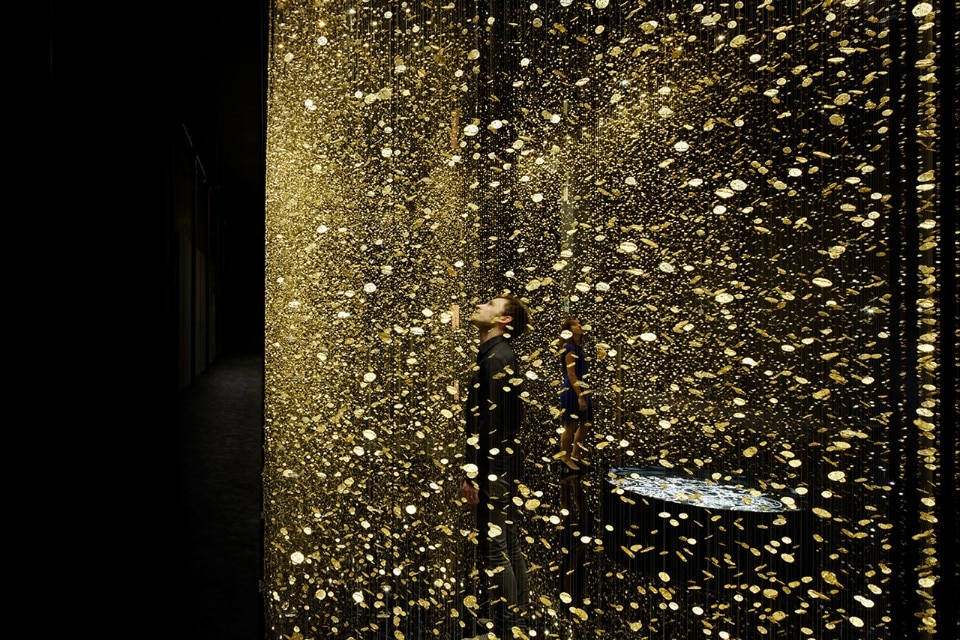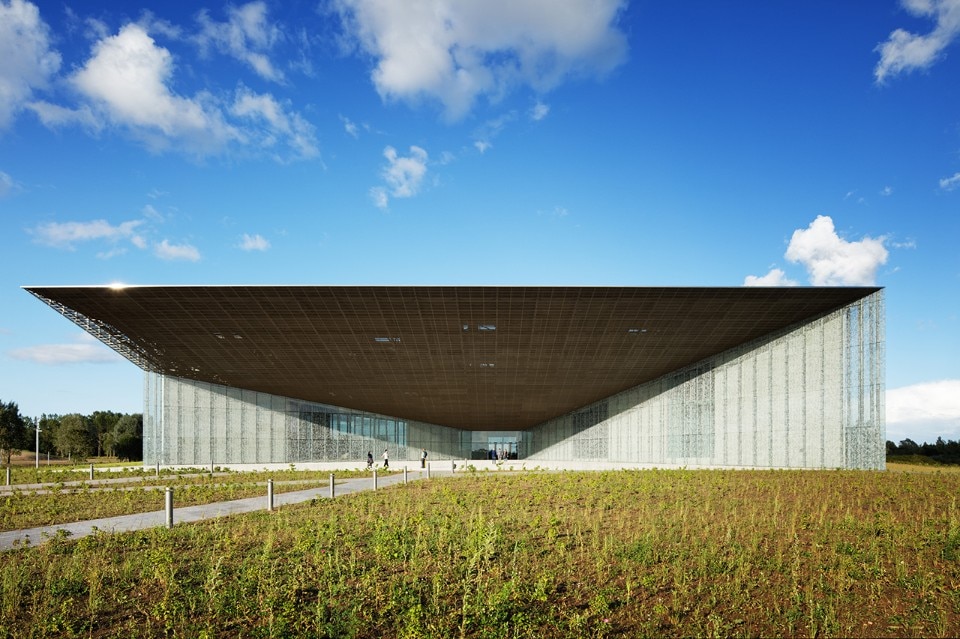At forty years old he has recently presented simultaneous exhibitions in two important venues in Tokyo, gradually standing under the spotlight next to other big names in Japanese architecture.
The project that earned him international fame – the Estonian National Museum (top, photo Takuji Shimmura) – is the first of a long series of works among which many already completed and others ongoing such as the Hirosaki Museum of Art, the project of a village intended as a widespread 5-star hotel in Bhutan, a home in Todoroki, a stadium in Shibuya, various installations and a methodology-manifesto on his way of practicing and thinking about architecture.
We visited his studio in Paris to hear firsthand about it.
We are very intrigued about your story, especially since you just had two exhibitions in relevant venues for architectural shows in Tokyo such as Toto Gallery MA and Tokyo Opera City Art Gallery (TOCAG)…
In the case of Toto Gallery MA, it used to host mainly architects with more experience. Recently Kazuyo Sejima and Yoshiharu Tsukamoto became members of the selection committee and are inviting the younger generation of Japanese architects to show their work, such as Akihisa Hirata and me during the last year. In the case of TOCAG it was a different case, also a surprise for me.
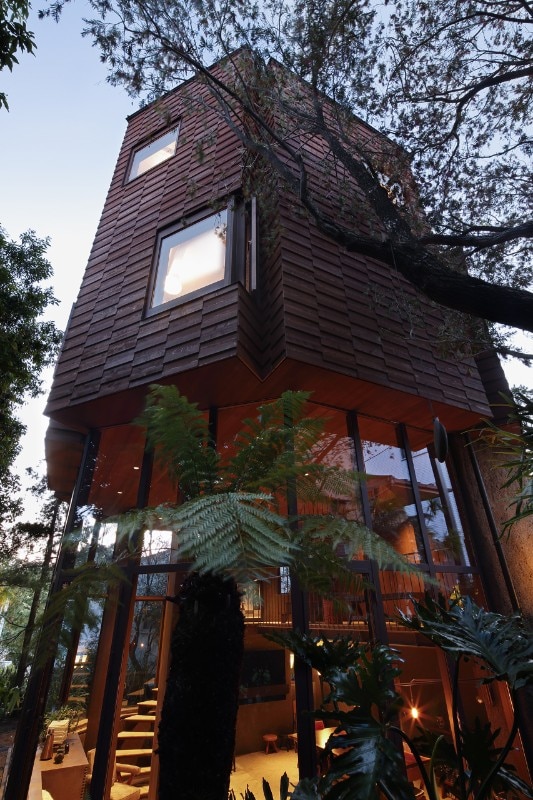
How did your connection with France begin? Why did you decide to move here?
It was not planned at all. In my second year, my architecture school had an exchange plan with Sweden. So I came to Europe, for the first time in my life at nineteen years old. When I look back today at that period in Scandinavia, I realise that it was a very important time in my life.
I stayed one year in Sweden, and then I visited Denmark. There I became fascinated with Scandinavian culture, philosophy and society. In total I stayed one year in Sweden and three and half years in Denmark. After Denmark, I decided to move to London where I worked for David Adjaye.
At that time David was shifting from designing housing projects to more cultural ones. I enjoyed my life being in London and learning so much from working with him. It was back at this moment that I met my former partners Dan Dorell and Lina Ghotmeh, who were coming to London for one year to work for a project with Jean Nouvel. It was 2006, and basically we developed (and ended up winning) the Estonian Museum competition just the 3 of us working at night and during weekends, because we were working for other architects.
Looking at your architecture and after visiting your office, we can see that you appreciate to work with diverse historical references and search into various fields of knowledge that accumulate in a place.
Reading your manifesto about “Archaeology of the Future” we infer that for you a place is not only physical but something beyond; there is a sort of stratification of tangible and intangible things that we can dig and find. Could you elaborate further on your manifesto?
This idea started slowly when I was started setting my office around 2009. We started with this technique of using images and thinking more archaeologically. As architects we struggle to bring new ideas and designs, but at the end they become quickly outdated. I have always questioned if architecture can be deeper than the simple obsession of making something new. Rather than thinking newly, we aim to excavate in the memory of the place that we are working. Before we start designing any project, our thinking process aims to understand these memories and find some strong messages that could be useful today and in the future. This archaeological research becomes a common language for all in the team, assuming that we are an international practice with diverse backgrounds and understandings.
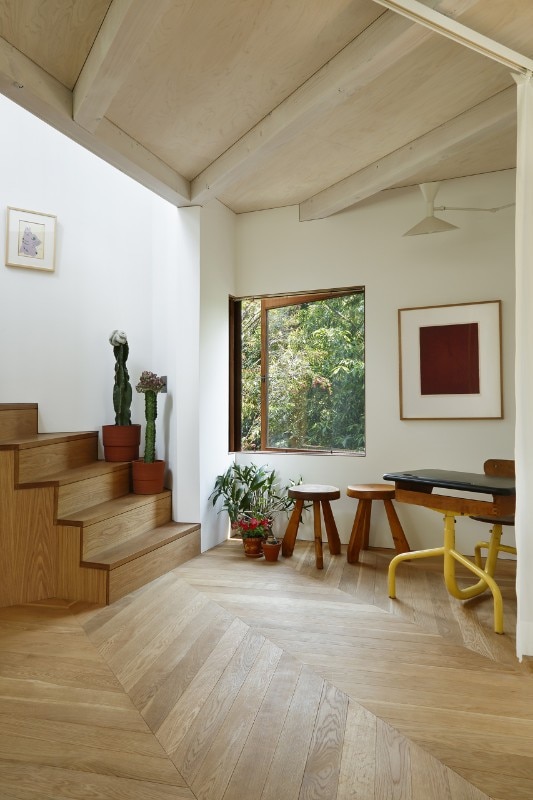
Shigeru Ban, Sou Fujimoto and Kengo Kuma based alternative branches in Paris after having well established practices in Japan. Your case is very different since you started here from the scratch.
In this regard Toyo Ito was commenting in an article that Japanese young architects don’t have access to public projects, mainly focusing in designing houses projects. For Ito this condition is creating certain generational frustration. As we observe that you are having several commissions in Japan but not yet in Paris, what kind of differences you see between being a young architect in Japan vs. one in Paris?
My situation is not a good example since my journey has had big detours. I didn't follow the typical career that many Japanese architects have; from learning through a great Master architect to attending a famous university. I basically went from Tokyo to Hokkaido and after to Europe.
There are other similar examples such as Ando or Ban, even Fujimoto. All of them had to learn from their own personal experiences. In such journey you have to develop your own personal approach and philosophy from an earlier stage.
Regarding the current situation with young architects in Japan, one big danger is to become designers of small issues. Our role is to drive society, our generation is becoming weaker and weaker and people don’t know how to imagine a big future or big ideas. Construction companies have too much power today and architects have little power to negotiate.
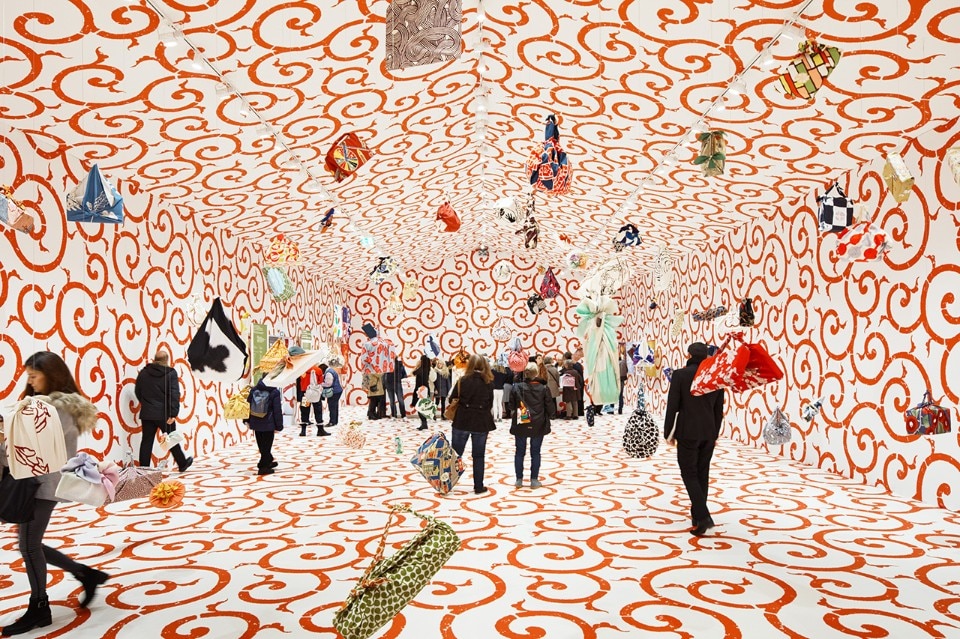
We could make an analogy in the case of Sou Fujimoto similar to a “ronin”, a samurai with no Master. Wouldn’t you claim anyone to be such figure in your path?
Actually, I used to work for a short period with Fujimoto and Sejima, but I cannot see them as my masters. I was only doing an short experience, so maybe you can call me another “ronin” too (laugh).
Comparing the theoretical approach of many Western architects vs. Japanese, the first tend to legitimize their ideas through the continuation of previous existing knowledge or references.
In Japan we often read that architects are more self-referential, validating their position rather based in their own architectural experiences. In Western architectural manifestoes there is a more collective awareness expressed by a “we believe / think…”, in contrast with more individual statements made by Japanese architects expresses as “I believe / think…”
Being from Japan I know how Japanese architectural thinking works, but at the same time I have also learnt about European one. I have learnt from both fields. By using keywords and images we aim to research and think archaeologically, this means digging deep in history and memories but also classifying things. We don’t only refer to past archaeology but speculating on future. We continue experimenting and challenging ourselves all the time.
I recently had a dialogue with Junya Ishigami during the exhibition we had at Toto Gallery MA. He pointed out our interest in material culture. He could feel certain “strong texture” characterizing our projects. I am now reconsidering more about it but certainly my interest is more about the place than space, since place always has an inherent texture that conveys the sense of it. It is not by chance that in my manifesto the word space is never mentioned. In this regard I want to create places rather than spaces.
